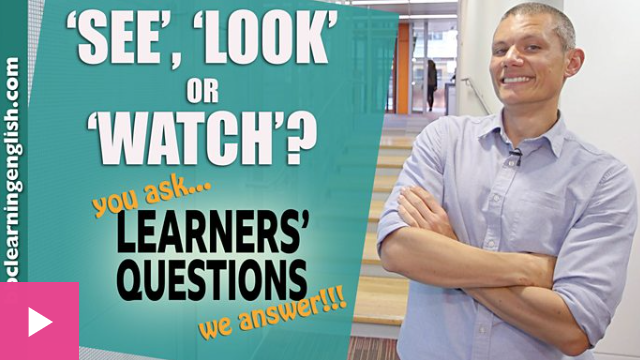This week’s question
What’s the difference between ‘see’, ‘look’ and ‘watch’? – Shanu
Answer this
How many verb forms does the verb ‘lie’ have?
Language points
See – perceive
See can mean ‘perceive’ or ‘receive information via your eyes’. See in this meaning is a state verb (so no seeing!)
- If you look here, you will see me!
See – imagine
See can mean ‘imagine’. You can see something happening, see someone as something or see yourself as something.
- Where do you see yourself in five years’ time?
- In five years’ time, I see myself as a serious news reporter.
Look – direct your eyes
Look means ‘direct your eyes to see something’.
- If you look here, you will see me!
Look – appear
Look can mean ‘appear’. It’s usually followed by an adjective. Combine look with ‘at’, ‘into’ or ‘over’ to mean ‘examine’ or ‘investigate’.
- That book looks interesting.
- Your meal looks delicious.
- Police are looking into reports of fraud at a local bank.
Watch – observe
Watch can mean ‘fix your vision on something to observe it’.
- You are watching me.
Watch – be careful of something
Watch can mean ‘be careful of something’. We watch for something, watch out for something or watch + question word.
- Watch what you say about him. He sees everything.
Watch – guard
Watch can mean ‘guard’ or ‘protect’. We can also use watch over.
- Please watch my bag while I go to the toilet!
The answer
It has two sets of verb forms: 1 – ‘lie’, ‘lay’ and ‘lain’. 2 – ‘lie’, ‘lied’ and ‘lied’. Be careful! They have different meanings.
